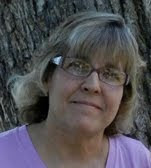ROMERT GOES TO WASHINGTON
Essential Tremor is a rhythmic, involuntary muscular contraction characterized by oscillations (to-and-fro movements) of a part of the body. The most common of all involuntary movements, tremor can affect various body parts such as the hands, head, facial structures, vocal cords, trunk, and legs; most tremors, however, occur in the hands. Tremor often accompanies neurological disorders associated with aging. Although the disorder is not life-threatening, it can be responsible for functional disability and social embarrassment.
NINDS investigators are currently conducting physiological studies of patients with tremors. These studies include classifying the tremor and providing appropriate therapy.
Dystonias are movement disorders in which sustained muscle contractions cause twisting and repetitive movements or abnormal postures. The movements, which are involuntary and sometimes painful, may affect a single muscle; a group of muscles such as those in the arms, legs, or neck; or the entire body. Early symptoms may include deterioration in handwriting, foot cramps, or a dragging foot after running or walking some distance. Other possible symptoms are tremor and voice or speech difficulties. About half the cases of dystonia have no connection to disease or injury and are called primary or idiopathic dystonia. Of the primary dystonias, many cases appear to be inherited. Dystonias can also be symptoms of other diseases, some of which may be hereditary. In some individuals, symptoms of a dystonia appear in childhood. For other individuals, the symptoms emerge in late adolescence or early adulthood.
The National Institute of Neurological Disorders and Stroke (NINDS) conducts research related to dystonia in its laboratories at the National Institutes of Health (NIH) and also supports additional dystonia research through grants to major medical institutions across the country. Investigators believe that the dystonias result from an abnormality in an area of the brain called the basal ganglia, where some of the messages that initiate muscle contractions are processed. Scientists at the NINDS laboratories have conducted detailed investigations of the pattern of muscle activity in persons with dystonias. Studies using EEG analysis and neuroimaging are probing brain activity. The search for the gene or genes responsible for some forms of dominantly inherited dystonias continues.


